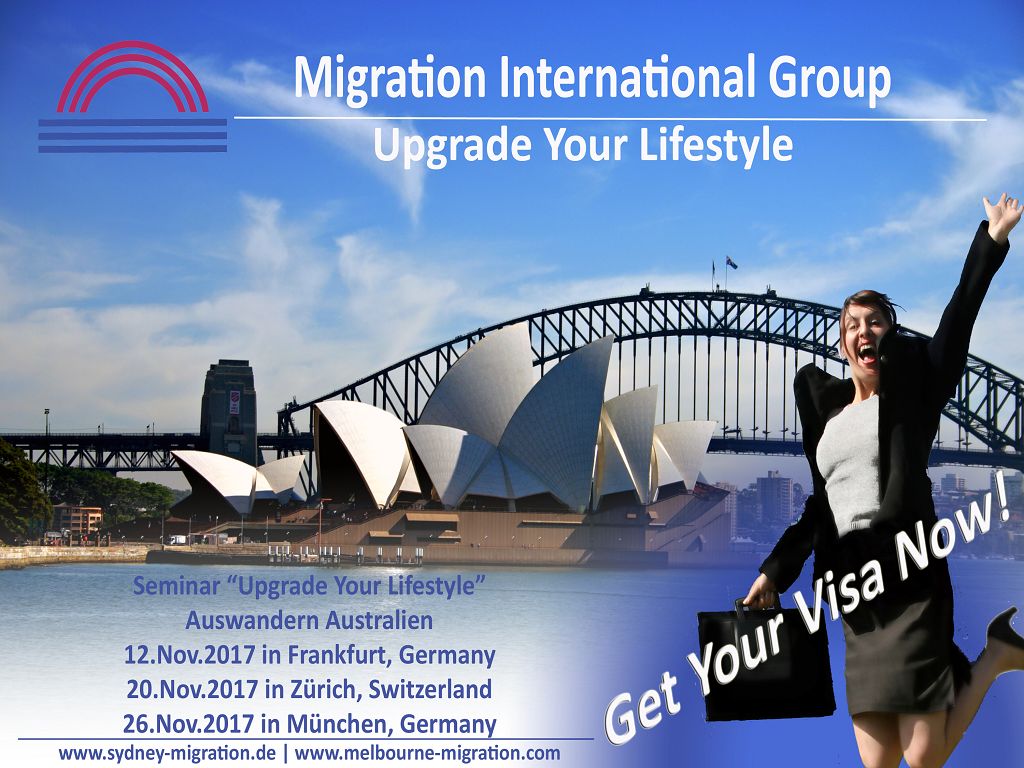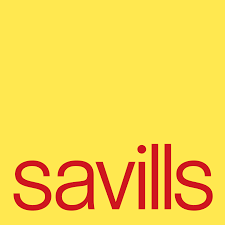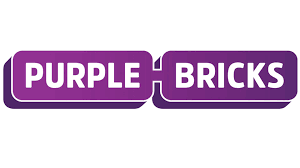The migration regulations changes made by the Immigration Department this 1st July 2017 have brought good news to working holiday visa workers.
The Department has amended the eligible age for Subclass 417 Working Holiday, which applicants must be aged at least 18 and no more than 35 years old at the time of application. If an age younger than 35 is specified in an instrument for a specified passport, that younger age limit will be applied.
On the other hand, for subclass 462 Work and Holiday Visas, the increase to age limit is only available for those countries where Australia has negotiated a similar bilateral age increase.
Contact us and stay informed:
Key recent changes prior to 1 July 2017
On 19 April 2017 the occupation lists which determine which occupations are eligible for skilled visas (i.e. subclass 457, 186, 189, 190, 407, 485, and 489 visas) were changed and the eligible occupations were significantly condensed resulting in fewer occupations being available.
For practical purposes, two new lists were in effect created:
457 visas for occupations on the MLTSSL are now issued for a maximum of 4 years. However 457 visas for occupations on the STSOL are only issued for a maximum of 2 years.
1 July 2017 changes
A number of changes have been implemented effective 1 July 2017 which impact the 457, 186, 187, 189, 190, 485, and 489 visa subclasses.
The occupation lists which underpin many of these skilled visa subclasses and determine which occupations are eligible for each visa have again been changed. Notably:
The key changes are as follows:
The key changes are as follows:
The key changes are as follows
The key changes are as follows:
The key changes are as follows:
he key changes are as follows:
The key changes are as follows:
Read more about:
Sponsoring EmployeesStandard Business SponsorshipHow to become an approved sponsor?Self SponsorshipSkilled Migration
Further changes are expected on or around 31 December 2017 and again in March 2018. One of the key reforms is the abolishment of the 457 visa and its replacement with a new Temporary Skill Shortage Visa in March 2018.
Please contact our Migration Agents and Immigration Lawyers if you have any questions. Contact us and stay informed:
 Migration International Group is a proud member of the Australian Migration Agent and Immigration Lawyer Association
Migration International Group is a proud member of the Australian Migration Agent and Immigration Lawyer Association
A lot of people might not realise that when their permanent residence is granted they receive a travel facility which is only valid for 5 years.
To maintain your Australian permanent resident status, you must either meet a residence requirement in Australia or prove that you have close ties to Australia.
Although your permanent visa will allow you to remain in Australia indefinitely, the travel facility is only valid for a period of 5 years.
If you wish to continue travelling to and from Sydney after the initial 5-year facility, it is compulsory to either:
Australian citizenship is the preferred option as it will allow you to always re-enter Australia. As an Australian citizen, you could also obtain an Australian passport.
To qualify for Australian Citizenship, you must meet strict residence requirements. If the requirements are not met, the Resident Return Visa (RRV) would be the next best option.
For more migration information, contact us and stay informed:
Finding skilled workers can be a challenge for employers across a range of industries and workplaces. Therefore, Australia's skilled migration system targets overseas skilled workers with the skills Australia needs, to help reduce skill shortages or recruitment difficulty.
Australia’s skilled migration system has prioritised the selection of skilled migrants with the skills to address the shortages in Australia's labour market. It targets overseas skilled workers with the skills Australia needs across many industries and complements domestic training policies.
Below are some facts which were recently published by the Department related to skilled migration:
• 128,550 skill stream visas were granted, with the Skill stream comprising approximately 67.7 per cent of the total programme (Skill, family and special eligibility streams).
• The top three occupation groups for primary visa grants in the Skill stream were Professionals (63.1 per cent), Technicians and Trades Workers (22.0 per cent) and Managers (8.6 per cent).
• For comparison, the government has granted approx. 85,000 subclass 457 visa in the previous 12 months.
Small business may consider a visa under the skill stream to avoid the political uncertainty of the 457 visa.
Sponsoring EmployeesStandard Business Sponsorship
Contact us and stay informed:
We have previously discussed changes to the lists of occupations which are eligible for 457 / skilled visas as part of the Government’s planned replacement of the 457 visa by March 2018.
The occupation lists have changed, and new occupation lists determine whether or not an occupation is eligible for a skilled visa.
In effect, there are two new lists for practical purposes:
The maximum duration of 457 visas where the occupation is listed on the STSOL is 2 years. If listed on the MLTSSL the maximum duration is 4 years.
From a commercial perspective, the following key additional changes are planned in the coming months:
In both scenarios, employers will have to pay a contribution to the “Skilling Australians Fund” (payable in full at the time of nomination of the worker). Based on presently available information the contribution will be $3,000 if the business has an annual turnover of less than $10 million. Otherwise it will be $5,000.
Sponsoring EmployeesStandard Business SponsorshipHow to become an approved sponsor?
To minimise any possible interruption from upcoming visa changes for your business, contact us and stay informed:
The Department of Immigration and Border Protection (DIBP) has published a list of processing times for various visa types and citizenship application programs. This information will be available for most visa and citizenship types, and can be found on DIBP’s website.
The objective: visa applicants may now receive up-to-date information regarding the status of their visa applications.
Two processing times will be displayed for most subclasses, indicating how long it takes to finalise 75% and 90 % of applications globally.
To gain a precise estimate of the visa application processing time, applicants must lodge a complete application. It is significant to note that applications are evaluated on a case-by-case basis, and that actual processing times may vary depending on individual circumstances including:
Our migration agents in Sydney can help you to prepare decision ready applications to reduce unnecessary waiting times.
Contact us and stay informed:
The Department of Immigration and Border Protection announced a total of potential 200 Vietnamese citizens aged between 18 – 30 will become entitled to enter Australia under the Work and Holiday Visa program. This is a result of the recently signed partnership between Vietnam and Australia allowing a certain number of young individuals to spend a vacation and/or work in their respective countries.
Joining other countries such as China, Indonesia, Spain, Thailand, the USA etc., Vietnam officially becomes the most recent addition to Australia's Work and Holiday Visa Program (subclass 462).
This visa program allows a visitor to stay in the country for 12 months, work for six months, and study up to four months. The visitor is also given an unlimited “leave and re-enter” privilege while the visa is valid.Vietnamese citizens are able to apply for a second Work and Holiday visa if they have worked for three months in northern Australia in tourism and hospitality or agriculture, forestry and fishing.This program reopens on 1 July every year.
Contact us and stay informed:
To kick off the Government’s planned abolishment (and replacement) of the 457 visa by March 2018, there are now two new occupation which lists apply and prescribe the occupations that are now eligible to be nominated for the purposes of various skilled visas (including 457 visas).
Please refer to our previous alert for further background information including:
Our previous alert can be accessed here: 457 and Skilled Visa News
In effect, there are two new lists for practical purposes:
Please refer to the following summary table for visa subclass specific information concerning:
Please also note it is likely that the lists will be further amended in the coming months. We recommend seeking advice if you are amongst the affected visa subclasses.
| Visa |
Relevant Changes |
|
189 Skilled – Independent Visa |
There are in effect practically no changes for the purposes of this visa subclass other than a change in the name of the relevant list. The changes apply to invitations issued after 19 April 2017. |
|
489 Skilled – Regional (Provisional) Visa - with family sponsorship – no State or Territory nomination |
There are in effect practically no changes for the purposes of this visa subclass other than a change in the name of the relevant list. The changes apply to invitations issued after 19 April 2017 if the applicant is not nominated by a State or Territory government agency. |
|
485 Temporary Graduate Visa |
There are in effect practically no changes for the purposes of this visa subclass other than a change in the name of the relevant list. The changes apply to applications made on or after 19 April 2017. |
|
190 Skilled – Nominated Visa |
Numerous occupations have been affected by the changes. Relevantly: 1. Various occupations have been removed entirely from the list for all of these visa subclasses and are no longer available. 2. Certain occupations are no longer available under subclass 190 and are now only available under 189, 485, 489 visas. 3. Certain specific occupations are now only available in relation to certain visa subclasses. The changes apply in relation to a person who is nominated by a State or Territory government agency, or the spouse or de facto partner of a person who is nominated by a State or Territory government agency, and who is issued an invitation on or after 19 April 2017. |
|
489 Skilled – Regional (Provisional) Visa with State/Territory nomination |
Numerous occupations have been affected by the changes. Relevantly: 1. Various occupations have been removed entirely from the list for all of these visa subclasses and are no longer available. 2. Certain occupations are no longer available and are now only available under 189, 485, 489 (no state/territory nomination) visas. 3. Certain specific occupations are now only available in relation to certain visa subclasses. The changes apply in relation to a person who is nominated by a State or Territory government agency, or the spouse or de facto partner of a person who is nominated by a State or Territory government agency, if they are issued an invitation on or after 19 April 2017. |
|
457 Temporary work (Skilled) Visa |
Numerous occupations have been affected by the changes. Relevantly: 1. Various occupations have been removed entirely from the list for all of these visa subclasses and are no longer available. 2. Certain occupations are no longer available under subclass 457 (and are now only available under 189, 485, 489 visas) 3. Conditions have been imposed on 59 occupations for the 457 visa subclass which limit the breadth of the occupation that can be nominated. They can still be nominated for 457 purposes as long as they fit within the amended scope of the occupation. Please check in with us if you fall within one of these occupations. 4. Certain specific occupations are now only available in relation to certain visa subclasses. The changes apply effective on 19 April 2017. No nomination or visa applications can be approved unless the occupation is on the new list and the occupation complies with any conditions. |
|
186 Employer nomination scheme |
Numerous occupations have been affected by the changes. Relevantly: 1. Various occupations have been removed entirely from the list for all of these visa subclasses and are no longer available. 2. Certain occupations are no longer available under subclass 186 (and are now only available under 189, 485, 489 visas) 3. Certain specific occupations are now only available in relation to certain visa subclasses. The changes apply for applications made after 19 April 2017. |
|
407 Training Visa |
Numerous occupations have been affected by the changes. Relevantly: 1. Various occupations have been removed entirely from the list for all of these visa subclasses and are no longer available. 2. Certain occupations are no longer available under subclass 407 (and are now only available under 189, 485, 489 visas) 3. Certain specific occupations are now only available in relation to certain visa subclasses. The changes apply for applications made after 19 April 2017. |
|
Contact our Migration Agents if you think your application is affected: |
On 18 April 2017, the Government announced that it will be abolishing the current 457 visa scheme by March 2018 and replacing it with a new Temporary Skill Shortage visa scheme.
With almost immediate effect after the announcement on 18 April 2017, the occupation lists which are used to determine which occupations are eligible for certain skilled visa subclasses (including 457 visas) have been significantly condensed. These changes took effect on 19 April 2017.
It has long been the case that in order to nominate someone for the purposes of a subclass 189, 489, 485, 186, 190, 489, 457, or 407 visa (i.e. skilled visas) it is necessary for the nominated occupation to be specified on a prescribed occupation list. These were previously known as the Skilled Occupation List (SOL) and the Consolidated Sponsored Occupation List (CSOL).
Amendments to these lists have been made which:
New occupation lists now apply. In effect, there are two new lists for practical purposes:
Subclass 190 and 489 visa applicants are basically affected if they have not yet received an invitation on or after 19 April 2017. If they have received an invitation prior to 19 April 2017, then the previous occupations (i.e. the occupation which is the subject of their invitation) will apply to their applications. Otherwise, their occupation must be in line with the new list.
Subclass 457 applicants who have pending applications which are yet to be decided will need to immediately ensure that they comply with the new list requirements / conditions. Please contact us for further assistance. For example, many occupations are still available, but have been restricted in their scope. It may still be possible to proceed with your application. Otherwise, if your occupation does not comply with the new list requirements, you should consider withdrawal (to potentially obtain a refund of your application fees) and consider alternative options (such as the employer sponsored 186 application which is a pathway to permanent residency, if available). If however there are no issues with your proposed occupation and you are on the MLTSSL, your visa can be approved for up to 4 years. If your visa is on the STSOL then it can only be approved for up to 2 years.
Subclass 186 and 407 applications which have been lodged but not yet decided should not be affected. Only new applications made on or after 19 April 2017 need to comply with the new lists.
Further changes may come into force which affect the above in the coming months.
We provide the answers to all your questions!
>> Is my visa application affected?
Please keep in mind that the news may not accurately reflect the current state of the law.
The 457 scheme continues to exist until the legislature amends the relevant legislation in the usual manner. We will continue to monitor any changes in this regard. We note for example that the Migration Amendment (Putting Local Workers First) Bill 2016 was registered by the House of Representatives on 28 November 2016. We anticipate that the current government will register a new bill soon to provide for further details of the proposed changes. We also anticipate that there will be transitional / grandfathering arrangements in place for existing 457 / skilled visa holders.
In the meantime, it is important for existing 457 visa holders to keep their current 457 visa expiry dates in mind, and seek prompt advice.
We can review your circumstances and suggest alternative pathways. Many of our business clients have already opted for the subclass 186 Employer Nomination Scheme to avoid the political uncertainty of the 457 visa.
Please refer to our webinar which was recently held earlier this year in conjunction with the NSW Chamber of Commerce: www.sydney-migration.com.au/business-solutions.html.
In the course of providing immigration services, Sydney Migration International and its Migration Agents are able to provide advice on a broader range of issues including:
Sponsoring EmployeesStandard Business SponsorshipHow to become an approved sponsor?
Contact us and stay informed:
In recognition of the great need for skilled migrants in regional parts of Australia, including capital cities such as Adelaide and Hobart, the Government has been presented with a Regional and Economic Migration Initiative (REMI) to boost migration.
The plan proposes an additional 40,000 migrant places be opened up for migrants seeking to live in areas other than the biggest Australian cities. The initiative presents an exciting prospect for those seeking to migrate permanently to Australia, as the REMI has been described as providing a fast-tracked pathway to permanent residency for investors, small business proprietors, employer nominated, student and temporary visa holders.
With over 120,000 Skilled Stream places available in the Migration Programme over 2015-2016, it is an ideal time to achieve points that are readily available.
A new points test under the General Skilled Migration Scheme (GSM), as announced on 8 February 2010, may be introduced on 01 July 2011.
The new points test will be focused on selecting highly skilled people.
Changes may include the award of extra points for e.g.:
The Department of Immigration & Citizenship (DIAC) has officially anounced a new points test to be introduced from 01.07.2011.
Queensland's State Migration Plan has come into effect; eligible occupation lists for visa subclasses 176, 886, 475 and 487 have been published.
The Northern Territory announced its State Migration Plan on 22 November 2010.
This list of eligible occupations contain large numbers of occupations - containing occupations NOT listed on the SOL - Schedule 3.
Canberra, the ACT, has announced its State Migration Plan on 08 November 2010.
Those lists of eligible occupations contain large numbers of occupations - exceeding the number of occupations on the SOL - Schedule 3.
Victoria has signed the Victorian State Migration Plan for visa sponsorships under Skilled-Sponsored and Skilled-Regional Sponsored Visa (subclasses 176/886, 475 and 487).
Victoria has issued two eligibilty lists (occupation lists).
Skilled visa applications, such as i.e.
New priority processing arrangements have come into effect since 01 July when the old Critical Skills List (CSL) was revoked.
New priorities are
1. ENS and RSMS visa applications
The new SOL came into effect on 01 July 2010 - it consists of 4 schedules.
The current SOL (schedule 3) – applies to all new General Skilled Migration visa applications and contains of just under 200 occupations, i.e.
Our Business References





























Our rating
Based on the opinion of 1082 people.







